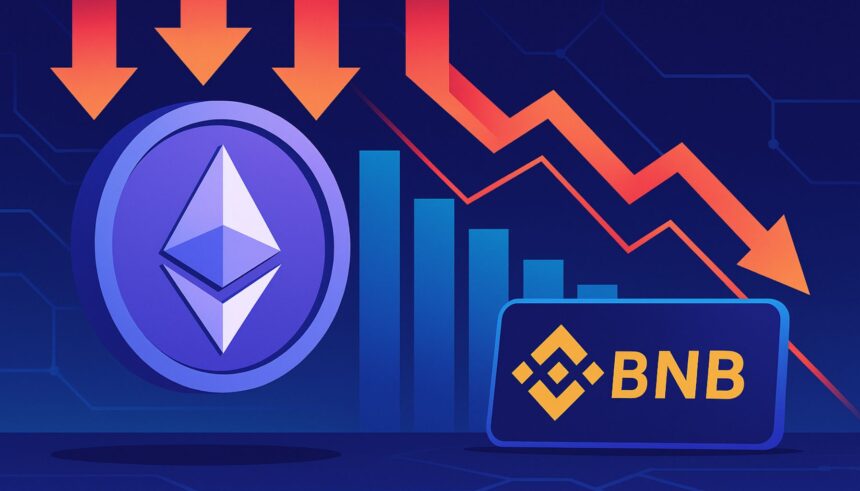
Ethereum is once again under pressure, struggling to find the strength to regain the $4,000 level amid heightened uncertainty across the crypto market. Investor sentiment is becoming increasingly cautious, with a range of opinions emerging among analysts, with some warning that a bear market may be forming and others believing this correction could precede a big rally in the coming weeks.
According to CryptoQuant Insights, the latest on-chain data reveals notable changes in Ethereum trading activity that could shape near-term price trends. Despite the recent drop in ETH prices, the 7-day moving average of Exchange net flows (total) has been moving from heavy outflows to inflows, rising from around -57,000 ETH on October 16th to +7,000 ETH in recent days.
This change suggests more ETH is moving to exchanges and could signal increased selling pressure as traders prepare to offload assets amid volatility. Historically, such surges in inflows have often preceded short-term pullbacks, especially when accompanied by negative market sentiment. However, some analysts caution that this may not be a complete distribution and may also reflect whale repositioning or liquidity management.
Binance activity triggers warning signal as inflows to Ethereum exchange surge
According to CryptoOnchain’s latest analysis on CryptoQuant, Binance appears to be playing a major role in Ethereum’s recent transaction flow dynamics. According to the data, Binance’s 7-day netflow has changed dramatically, going from around -31,000 ETH on October 15 to +3,000 ETH in recent days. This single exchange accounted for nearly 50% of the total changes observed across all major trading platforms, highlighting its significant impact on Ethereum’s short-term liquidity situation.

A sudden and significant increase in ETH deposits on this exchange is usually considered a short-term bearish signal, especially during periods of price weakness. When traders and institutional investors transfer coins from their personal wallets to exchanges, they often signal that they are ready to sell or reposition in anticipation of further decline. As a result, increased supply on exchanges could increase sell liquidity, making it easier for large sell orders to have a more rapid impact on price movements.
But analysts cautioned against interpreting the move too narrowly. Currency inflows often precede selling pressure, but may also reflect strategic hedging, collateral deposits for derivatives trading, or liquidity management during market stress.
Still, when combined with broader macro uncertainty and Ethereum’s struggle to outperform key technology standards, this data reinforces a cautious trend prevailing across the market. If capital inflows continue and Ethereum fails to protect support around $3,800 to $3,700, downside risk could increase. Conversely, a rapid recovery in outflows could signal renewed investor confidence and set the stage for a stronger recovery.
Support for ETH holding keys amid uncertainty
As shown on the 3-day chart, Ethereum is currently trading around $3,880, holding just above the key short-term support zone around $3,700 to $3,750. The recent retracement has brought ETH back near its 50-day moving average, currently serving as an important line of defense for bulls.

After breaking through and failing to sustain the $4,400 level earlier this month, Ethereum has entered a correction phase that reflects broader weakness in the altcoin market. The price structure shows higher lows forming since the local high, indicating weakening momentum. However, as long as ETH remains above its 100-day moving average near $3,400, the broader uptrend is technically intact.
If the current support holds, Ethereum could attempt a further recovery towards $4,000-$4,200, where strong resistance and the previous liquidity cluster reside. A confirmed close above this zone could indicate renewed strength and signal the end of this correction phase.
On the downside, a decisive drop below $3,700 could expose ETH to even greater losses, targeting $3,400 and even $3,000, where historically stronger demand exists. For now, Ethereum’s price movement remains at a critical point, balancing between short-term weakness and the possibility of a medium-term recovery.
Featured image from ChatGPT, chart from TradingView.com

editing process for is focused on providing thoroughly researched, accurate, and unbiased content. We adhere to strict sourcing standards, and each page is carefully reviewed by our team of top technology experts and experienced editors. This process ensures the integrity, relevance, and value of your content to your readers.


